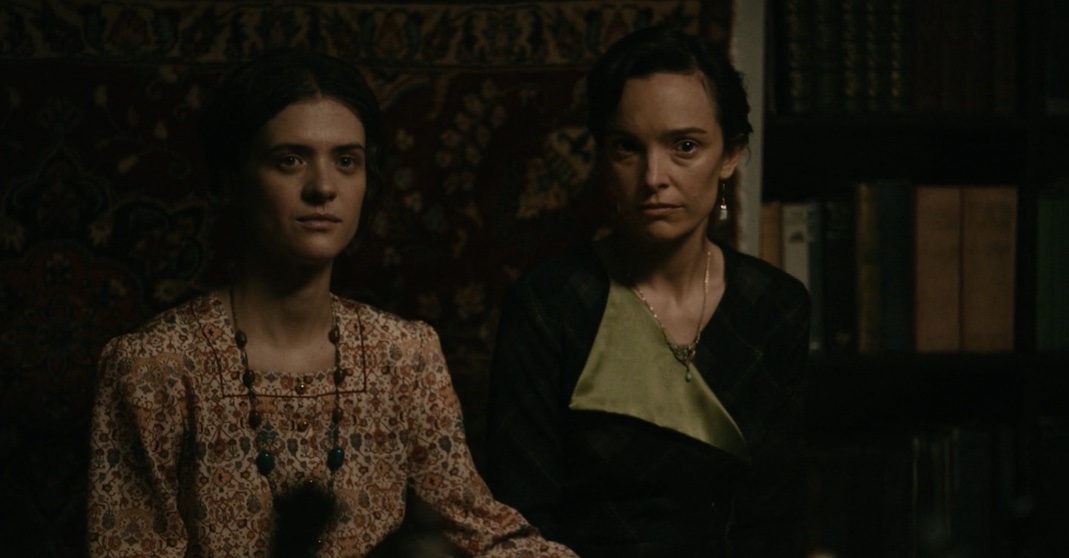In ‘Freud’s Last Session,’ a meeting between Sigmund Freud and C.S. Lewis sheds light on both of their pasts and the impact it has on their current relationships. For Lewis, his parents and his time in the First World War emerge as the major factors to shape his life and thoughts. For Freud, his relationship with his daughter, Anna, takes center stage, which further leads to his thoughts on homosexuality. As the attention shifts towards Anna, we find her torn between caring for her ailing father and having a romantic relationship of her own, something that his father is too involved in.
While her male suitors are warded off, by the end of the film, Anna makes it clear that she is in love with Dorothy Burlingham, her great friend and fellow psychoanalyst. However, one must consider that the film is a fictional rendering of the events that may or may not have happened. This leaves a question mark on Anna’s true sexuality, and how close, if at all, the film comes to depicting it.
Anna Freud Kept Her Romantic Life Completely Secret
While Anna Freud is known for her exceptional professional work in psychoanalysis, especially child psychology, very little is known about her personal life outside of her immediate family. The nature of her romantic relationships remains in the dark even now, and it is through her visible connections with others that people make guesses about who she may or may not have been in love with. Due to the close personal and professional nature of her relationship with Dorothy Burlingham, a lot of people assume that the women were in a homosexual relationship. However, there is no proof or confirmation from either Anna or Dorothy to confirm the fact.
Sigmund's daughter Anna Freud and her partner Dorothy Burlingham at their Hampstead War Nurseries in London pic.twitter.com/8Gwfdb3Qd1
— Lacan Circle Of Australia (@lacancircle) May 24, 2022
The fact that Anna Freud never married and, following her father’s death, spent the rest of her under the same roof with Dorothy, raising her four children with her, is one of the reasons why it is suspected that she and Dorothy’s relationship had more to it than just friendship. On her part, however, Anna denied having had a sexual relationship with Dorothy (though it could be because homosexuality wasn’t exactly socially acceptable at the time). Moreover, their correspondences over the course of their lives (which are currently at the Freud Museum in London) also show no hint of the existence of anything romantic between the women. Though, the fact remains: Anna and Dorothy lived and worked together till the end of their days.
The foundation for Dorothy and Anna’s friendship was laid in the 1920s when Dorothy, after leaving her unhappy marriage with a surgeon in New York, moved to Vienna with her four children. One of her children had a skin disorder, which was psychosomatic in nature. It was the thought of curing him that brought her to Vienna, where she eventually ended up in the Freud household. Anna took Dorothy’s son under her care while Dorothy herself started sessions with Anna’s father. Sometime later, Dorothy’s son’s skin problem was solved. By then, however, Dorothy herself had become highly interested in psychoanalysis, and when the Freuds left Vienna in 1938, she joined them in their move to London.
Initially, Dorothy lived a few houses away from the Freud house; however, in 1940, a year after Sigmund Freud’s death, she moved in with Anna and remained there for the rest of her days. Her four children also joined her, and in essence, Anna became the co-parent. Living together, the women worked jointly on several projects. During the Second World War, they founded the Hampstead War Nurseries to care for children affected by the Blitz, and it led them to publish their work titled ‘Infants Without Families’ in 1943. In 1951, they co-founded the Hampstead Clinic (now called Anna Freud Center) with Helen Ross to provide therapy and assistance to patients while also providing an opportunity for budding analysts to learn from them. Apart from this, they also published several papers together.
I'm going to finish #IAD17 with two favourites of mine. The first is this photo of Anna Freud and Dorothy Burlingham. pic.twitter.com/YDtqoCXhxh
— Freud Museum London (@FreudMusLondon) June 9, 2017
Apart from their house in London, the women also co-owned several cottages. They first bought a cottage together in Hochrotherd, outside Vienna, but had to abandon it when they left Vienna. They later bought another place in Walberswick in Suffolk and another in County Cork, Ireland. When Dorothy died in 1979, she found a place in the Golden Green Crematorium at what is now called the “Freud Corner,” which is also the resting place of Sigmund Freud and others in his family. When Anna died in 1982, she was laid to rest next to Dorothy. Their house in London was turned into the Freud Museum, which also houses The Dorothy Burlingham Archive.
Considering the unbreakable bond that Anna Freud and Dorothy Burlingham sustained throughout their lives, it is not surprising that people would assume the women were lovers. While the questions about their sexualities and romantic relationships cannot be answered without a doubt, one cannot deny that they were best friends and, in some ways, each other’s soulmates.
Read More: What Happened to Sigmund Freud’s Dog Jofi?

